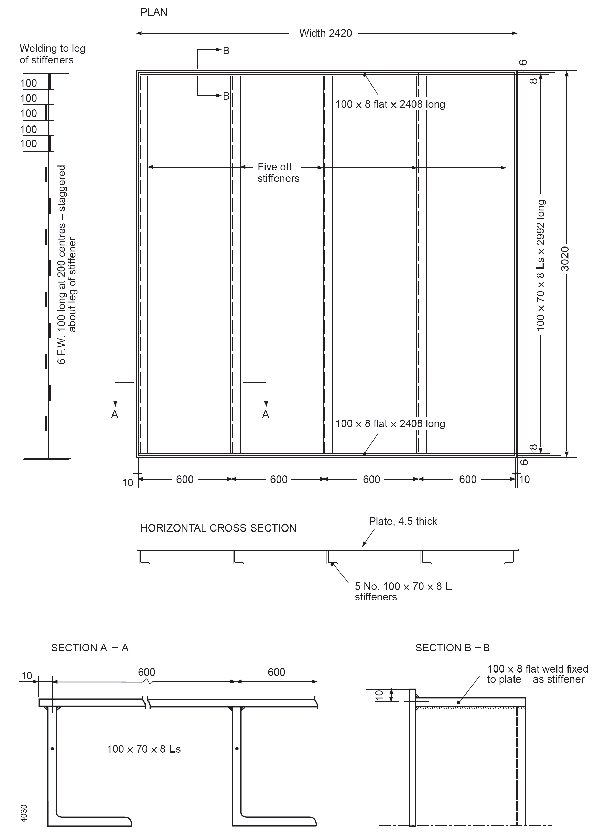The minimum overall dimensions for the test specimen are
given in SOLAS Regulation II-2/3.2,
but the recommended dimensions of the test specimen, including the
perimeter details at the top, bottom and vertical edges, are 2,440
mm width and 2,500 mm height.
The overall dimensions of the structural core should be
20 mm less in both the width and the height than the overall dimensions
of the specimen, and the other dimensions of the structural core should
be as follows:
| -
|
thickness
of plating:
|
steel
|
4.5 ±
0.5 mm
|
|
|
|
aluminium
|
6.0 ± 0.5
mm
|
| -
|
stiffeners spaced at 600 mm:
|
steel
|
65 ± 5 x
65 ± 5 x 6 ± 1 mm
|
|
|
|
aluminium
|
100 ± 5 x
75 ± 5 x 9 ± 1 mm
|
The width of the structural core may be greater than the
specified dimensions providing that the additional width is in increments
of 600 mm to maintain the stiffener centres and the relationship between
the stiffeners and the perimeter detail.
Any joints in the plating should be full welded, at least
from one side.
The construction of a structural steel core having the recommended
dimensions is shown in Figure 1;
the thickness of the plating and dimensions of the stiffeners shown
are nominal dimensions. Irrespective of the dimensions of the structural
core and the material of manufacture, the details around the perimeter
should be as illustrated in Figure
3.

Figure 1 Structural steel core for `A' class bulkhead and `B' class
lining

Figure 2 Structural steel core for `A' class deck and `B' class ceiling
Figure 3 Connection between restraint frame and structural steel core